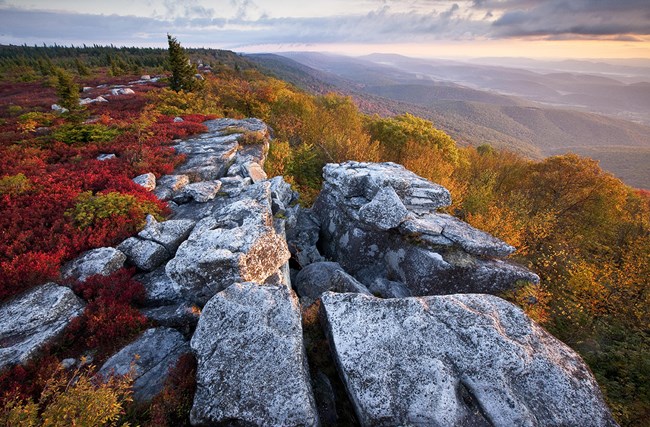Last updated: February 26, 2021
Article
Bear Rocks and Allegheny Front Preserve NNL

Kent Mason
But what exactly is a National Natural Landmark, and what is Bear Rocks? What NNLs are in the National Capital Area, and how do National Natural Landmarks differ from National Historic Landmarks?
NNLs Defined
A National Natural Landmark is a natural area recognized for containing outstanding biological or geological features. They are designated for their condition, illustrative character, rarity, diversity, and value to science and education.NNL sites can be publicly or privately held and designation as an NNL does not make a site accessible to the public, nor does it restrict any types of land use. However, the program does offer assistance with conservation efforts, if landowners want it.
Bear Rocks
Bear Rocks and Allegheny Front Preserve is a 1,204-acre (487-hectare) site in West Virginia, just north of the Dolly Sods Wilderness. It’s elevated, flat, sandstone-capped rocks along the Allegheny Front are a textbook example of how mountain landforms are transformed into plateau landscapes by millions of years of uplift and erosion following continental collision.Cold temperatures and elevations over 4,000 feet above sea level have created a rich ecological community dominated by red spruce and heath shrubs at higher elevations and by bogs and other wetlands at lower elevations. Bear Rocks provides habitat to more than 190 species of plants and hosts three rare plant communities.
National Capital Area NNLs
There are only a few NNLs in the National Capital Area including Sugarloaf Mountain and Belt Woods in Maryland. There are no NNLs in Washington, DC. Other nearby NNLs include Luray Caverns and Caledon Natural Area in Virginia, Battlecreek Cypress Swamp and Long Green Creek and Sweathouse Branch in Maryland, and Ice Mountain in West Virginia (not far from the Bear Rocks site). Explore a directory of all NNLs.An Ecosystem or an Edifice: NNLs vs. NHLs
NNLs are similar to their more well-known cousins National Historic Landmarks (NHLs). NHLs are historic places (they can be buildings, sites, structures, objects, or districts) that hold national historical significance and are exceptional because of their ability to illustrate U.S. heritage.Both the National Historic Landmarks Program and the National Natural Landmarks Program were established based on the authority of the Historic Sites Act of 1935, and both programs are managed by the National Park Service. However, there are some significant differences. The NHL program began in 1935 there are currently almost 2,600 NHLs in the U.S. while the NNL program in contrast was established in 1962 and now has more than 600 sites.
Learn more about the NNL designation of Bear Rocks and 2 other sites.
